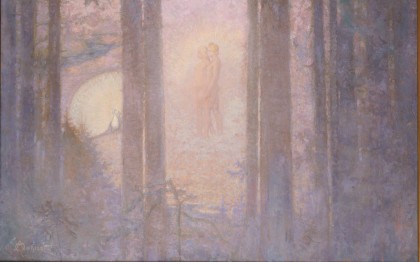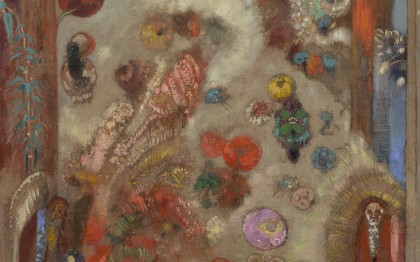'The cathedral is the synthesis of the country (...) Rocks, forests, gardens, northern sun, all these are encapsulated in this gigantic structure; the whole of France can be found in its cathedrals, just as the whole of Greece can be found in the Parthenon,' wrote Auguste Rodin in 1914, in his work Les Cathédrales de France.
This book took a long time to prepare, with hundreds of sketches and surveys, and testified to a fascination which inspired and punctuated all Rodin's work. In 1908, it could be found in a remarkable sculpture called La Cathédrale, in which the depiction of two interlinked hands brings to mind a Gothic vault. In 1880, it inspired the lengthy preparation of La Porte de l’Enfer (The Gates of Hell). Although the sculpture’s initial form was derived from Florentine models, its final structure was influenced by mediaeval portals, with their trumeaux and tympanums, and all the exuberance of sculpted bas-relief frames.
After their joint exhibition in 1889, Rodin and Monet communicated through the theme of the portal. Firstly, La Porte de l’Enfer influenced Monet's choice of a new motif, and in turn Monet's Cathédrales would show Rodin how light can transform a stone mass.
This same desire to dissolve architecture in light and colour can be found in the work of artists such as Odilon Redon. The mystical window, an opening towards another place, inspired him to produce some thirty works between 1900 and 1910; these works include Gothic architectural motifs, such as stained glass windows, arches and ribs. 'Poor, fragile creators that we are,' wrote Redon in A soi-même (To Myself), 'the slightest chronicle, the most precise date of a simple human act, will never match what the marvels of a cathedral proclaim, not even of the smallest fragment of stone within its walls!’


